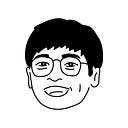3 Common Design Problems with Chinese Punctuation
A friend texted me earlier last month to ask about Chinese punctuation. She raised two questions: Why does the comma occupy so much space? How can I reduce it so it doesn’t look weird when I centralise the paragraph?
Here’s an attempt to share my thoughts and research knowledge on these questions. This will be a rather geeky article, read on, fellow geeks!
01 — The “Awkward Spacing” between each character when punctuation is used
When setting a paragraph in Chinese, punctuation marks such as full stop and comma occupies more space than their English counterpart.
Is this an awkward spacing? Let’s consider how we craft Chinese fonts as to English fonts.
In practice, Chinese characters use a square to hold the character within while aligning them to the centre (Traditional Chinese) or the left of the space (Simplified Chinese). In opposition, punctuation occupy half of the intended space as they are smaller in size. Thus, creating the extra spacing from square to square.
On the other hand, English characters vary in width and are dependent on kerning to adjust the space. Unless there’s a bad kerning, we won’t be seeing any extra spacing in the sentence.
To put simply, this isn’t a ‘problem’ as they each have their own rules and usage in typesetting. However, I would suggest tackling this issue by kerning and tightening the space between the characters.
Of course, it is still up to the designer to be their judge. One should put into consideration the reading rhythm and the placement of the punctuation mark.
P/s the real problem a designer may face is the “Line Breaking Rule” or “避头尾 ” in Chinese typesetting. I will do a full article on this in due time.
02 — The punctuation mark doesn’t align to the baseline
Well, as the title suggest, you may already guess that I am going to say next. Simply put, Chinese characters do not follow a baseline as they follow the centre of the square (中宮).
The main explanation is to understand the difference in the type of Chinese characters you are typesetting. There are two main groups — Simplified (SC) and Traditional (TC). Countries like China and Singapore predominantly uses SC while Taiwan and Hong Kong use TC more. In some countries like Singapore and Malaysia, it is also common to see the application of both SC and TC in various design or vernacular aspect.
TC is traditionally set in a top-down approach with the reading direction going from top to bottom, right to left. Hence, we align the punctuation marks to the centre and not at the bottom of the square.
SC text is set predominantly from left-right, which is the same as English characters. This require the alignment of the punctuation marks to the bottom of the square.
At the current decade, more texts were set from left-right regardless of TC or SC. The misaligned punctuation mark is still there but I won’t think it is an issue. See the beauty in the difference!
03 —The punctuation doesn’t look like a Chinese punctuation although I have already set the correct font.
Let me explain what went wrong above! You’ve set the keyboard in the wrong language.
While designing, we may often blindly copy-paste a long passage of text into the text field. Though they correctly reflect the Chinese text, the punctuation still appears in the English format as the font is in English (probably Myriad Pro)
To put it simply — English glyphs are present in Chinese fonts. When we paste the text with punctuation into the text field and these smaller details will be overlooked. Thus, resulting in this problem where the punctuation is in English glyphs while the text is in Chinese glyphs.
I write about Chinese design in Singapore. Writing is not my forte, and I am actively seeking all constructive comments. Feel free to PM your feedback to zhiliang.work@gmail.com. Otherwise, I will also be happy to chat with you about Chinese/bilingual design in general!
